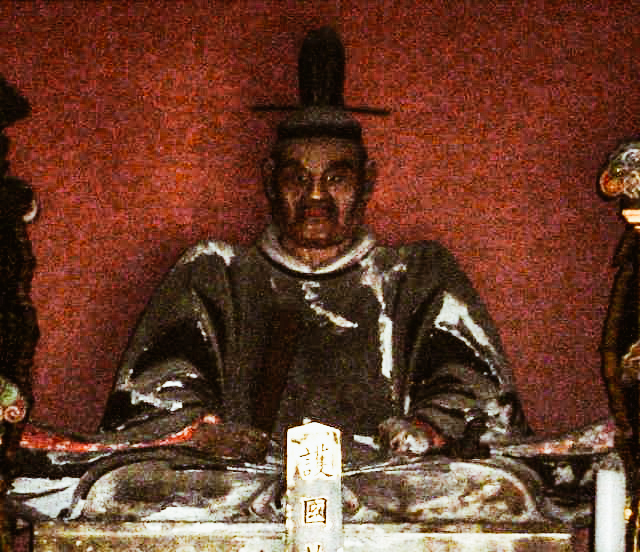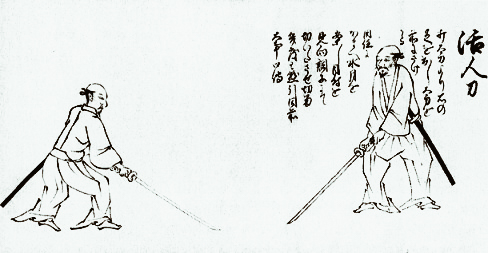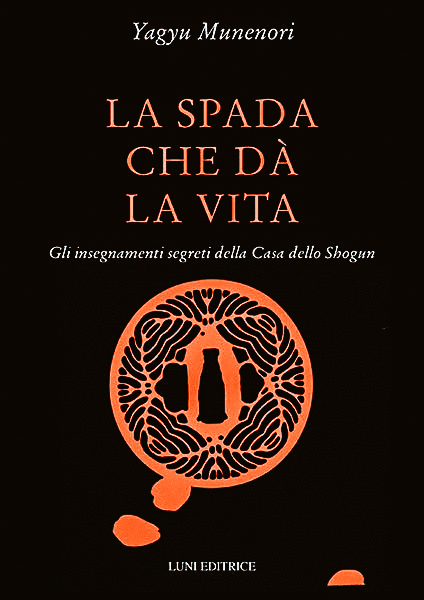Japan History: Yagyū Munenori
Yagyū Munenori (1571 – 11 maggio 1646) era uno spadaccino giapponese, fondatore dello Yagyū Shinkage-ryū, uno dei due stili di spada ufficiali patrocinati dallo shogunato Tokugawa (l’altro era Ittō-ryū).

photo credits: wikipedia.org
Diventa un grande esperto dell’arte schermistica grazie ad un lungo percorso quasi monastico dedicato all’insegnamento presso la famiglia dello Shogun. Proprio in questo luogo scopriamo la sua vera natura: guida e consigliere politico di ben tre shogun e capo di un corpo di “intelligence” da lui creato. Yagyū Munenori guiderà il Giappone, in piena segretezza, per quasi trent’anni.
La carriera di Yagyū Munenori
Munenori iniziò la sua carriera nell’amministrazione Tokugawa come hatamoto, un diretto detentore della casa Tokugawa. In seguito il suo reddito fu aumentato a 10.000 koku, rendendolo un fudai daimyō, ovvero un signore vassallo al servizio dei Tokugawa. Successivamente, Yagyū Munenori ricevette anche il titolo di Tajima no Kami .
Munenori entrò al servizio di Tokugawa Ieyasu in giovane età, e più tardi divenne un istruttore di spada per il figlio di Ieyasu Hidetada. Divenne anche uno dei principali consiglieri del terzo shōgun Iemitsu.

photo credits: doacademytorino.wordpress.com
Poco prima della sua morte nel 1606 passò la guida dello Yagyū Shinkage-ryū a suo nipote Toshiyoshi. Dopodichè, Toshiyoshi entrò al servizio di un ramo del clan Tokugawa che controllava la provincia di Owari. La scuola di Toshiyoshi aveva sede a Nagoya e venne chiamata Owari Yagyū-ryū, mentre quella di Munenori, a Edo divenne nota come Edo Yagyū-ryū. Takenaga Hayato, il fondatore dello Yagyū Shingan-ryū, era suo discepolo e ricevette da lui degli insegnamenti segreti (gokui) dello Yagyū Shinkage-ryū.
Intorno al 1632, Munenori completò Heihô Kadenshô, un trattato sulla pratica di spada di Shinkage-ryū e su come potesse essere applicato alla vita e alla politica. Il testo è ancora in stampa oggi in Giappone ed è stato tradotto più volte in inglese. Tradotto in italiano: “La spada che dà la vita” è un’avvincente biografia di Munenori e una serie di tecniche di spada.

photo credits: www.lunieditrice.com
Anche i suoi figli, Yagyū Jūbei Mitsuyoshi e Yagyū Munefuyu erano famosi spadaccini.
Condividi:
- Fai clic per condividere su Facebook (Si apre in una nuova finestra)
- Fai clic qui per condividere su Twitter (Si apre in una nuova finestra)
- Fai clic qui per condividere su Tumblr (Si apre in una nuova finestra)
- Fai clic qui per condividere su Pinterest (Si apre in una nuova finestra)
- Fai clic per condividere su Telegram (Si apre in una nuova finestra)
- Fai clic per condividere su WhatsApp (Si apre in una nuova finestra)
- Fai clic qui per condividere su Reddit (Si apre in una nuova finestra)
- Fai clic qui per stampare (Si apre in una nuova finestra)






